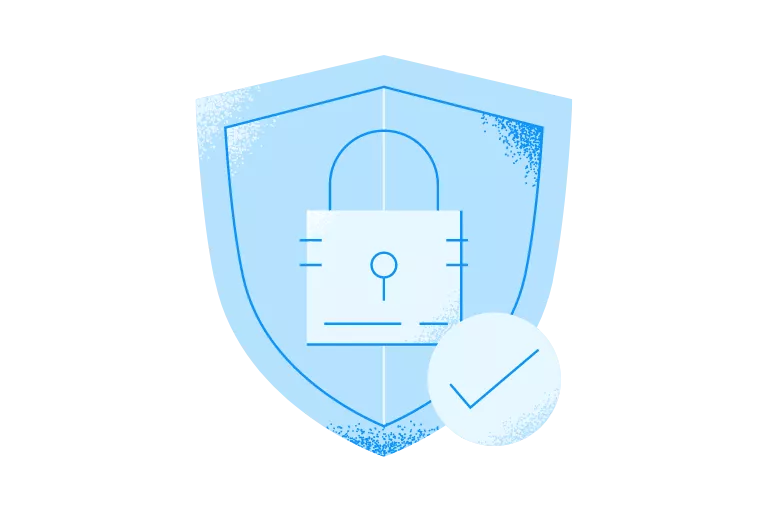
Stripe is a popular payment facilitator among many merchants, and for good reason. It provides a Stripe chargeback protection program designed to help merchants safeguard against product loss, chargeback fees, and potential revenue decline.
This may seem good on paper, but Stripe’s chargeback protection comes at a price. It takes a percentage of each transaction. For that reason, high-risk businesses might reconsider relying solely on Stripe’s chargeback protection.
Continue reading to understand Stripe’s dispute resolution, delve into the specifics of its chargeback protection, and learn how to win Stripe disputes.
Stripe Chargebacks: Overview of the Dispute Process
A Stripe chargeback occurs when a cardholder disputes a charge processed through Stripe. Just like regular chargebacks, the cardholder’s bank initiates them for a couple of reasons. Shipping issues, fraud, merchant error, or a dissatisfied customer are just a few reasons why a chargeback can happen. When a Stripe chargeback occurs, Stripe notifies you by email with all the information they have on hand about the dispute via the Stripe Dashboard.
You can then opt to accept or dispute the Stripe chargeback. Accepting the charge will result in a permanent credit (which was provisional before) to be extended to the customer. Disputing it, however, will require you to present appropriate evidence. As soon as Stripe has reviewed the evidence, it will decide whether to overturn the chargeback for the merchant. In the event that Stripe doesn’t overturn the chargeback, Stripe’s $15 chargeback fee will apply, and you’ll also lose the disputed amount.
Sometimes Stripe may send you an alert if it thinks a chargeback may be filed. In this case, you can try and solve the complaint directly with the customer before they proceed with Stripe disputes.
Understanding Stripe’s Chargeback Policies
Stripe’s chargeback policy is much like any other payment facilitator. Here’s what Stripe does when a cardholder disputes a charge:
- Notifies merchants about the dispute through one of Stripe’s platforms or e-mail.
- Deducts the disputed amount with an additional fee until the end of the process.
- Describes the dispute in detail and provides you with access to the account owner’s bank claim.
- Provides instructions for submitting convincing evidence in response to a dispute.
Stripe facilitates the process but has no influence over the outcome, which is entirely up to the cardholder’s bank.
Stripe Chargeback Fees & Costs
Every chargeback you receive through Stripe incurs a $15 fee. This fee, along with the disputed transaction amount, is deducted from your account upon receipt of a chargeback. It’s important to note that even if you successfully contest and win the dispute, Stripe does not refund the initial chargeback fee.
For businesses operating within the Single Euro Payments Area (SEPA), cards processed through the Cartes Bancaires network are exempt from Stripe chargeback fees.
Limits of Stripe Chargebacks
Card networks typically permit cardholders to initiate chargebacks up to 120 days from the transaction date. However, certain industries, like travel, allow for extended chargeback initiation periods due to the nature of advanced bookings.
After a customer initiates a chargeback, you have 7-21 days to respond to the card issuer. The exact time limit will depend on the card network itself. If you decide to combat the chargeback and submit evidence, the issuer has 60-75 days to examine the evidence and reach a verdict.
The entire dispute process, from the time of initial filing to the issuer’s final decision, can span 2-3 months. Other than accepting the dispute and choosing not to challenge it, there’s little a business can do to expedite this timeline.
What Is the Stripe Chargeback Protection Program?

The Stripe chargeback protection is Stripe’s shield against chargebacks. If you choose to enroll in it, you can no longer fight chargebacks, but it will return all the money you’ve lost during the chargeback process. This may seem like the perfect chargeback protection tool, but let’s take a look at what it covers and at what cost.
Any business that utilizes Stripe can opt into the Chargeback Protection program. These can be businesses that process transactions of all sizes for both physical and digital goods. But, it only protects transactions that require a customer to enter their own card details. This means that it doesn’t apply to one of the most commonly chargeback-targeted payment models, recurring payments. Furthermore, its protection is limited to fraud-related chargebacks, excluding chargebacks arising from unsatisfied customers or claims of undelivered products. Transactions that require manual approval are also not covered.
The chargeback protection program of Stripe costs an additional 0.4% per transaction.
Benefits of the Stripe Chargeback Protection Program
Fighting Stripe disputes with its Chargeback Protection programs benefits your business in a few ways:

Reduces the risk of chargebacks
The whole point of the Chargeback Protection program is to detect and stop potential fraudulent chargebacks. This results in a much smaller percentage of chargebacks.

Saves time and potential loss of revenue
The chargeback process can last up to three months. With the Chargeback Protection program, Stripe does everything for you, which means that you don’t have to bother wasting time obtaining evidence and fighting the dispute. Additionally, you don’t lose anything since Stripe will cover the full chargeback amount and fees.

Enhanced chargeback dispute success rate
Stripe has experienced chargeback specialists to protect your transactions from fraudulent charges. It also offers real-time updates on any ongoing disputes through the Stripe Merchant Dashboard.
How to Prevent Chargebacks on Stripe
While stopping chargebacks is impossible, you can take some steps to prevent them from happening in the first place. While some strategies might already be familiar, others can offer added layers of protection against potential Stripe chargebacks:
- Integrate chargeback protection tools: Chargeback protection tools are a feature that payment processors offer merchants to help them better deal with chargebacks before they occur. You’re essentially looking for a tool that puts your data on one platform for better visibility, sends you alerts right before a customer initiates a dispute, and has real-time reports so you can react quickly.
- Use your trading name on your accounts: This will allow your customers to clearly distinguish between businesses on their bank statements. It ensures customers can easily identify transactions on their bank statements, minimizing inadvertent chargeback initiations due to unrecognized charges.
- Provide clear information about shipping, returns, and warranties: Having clear shipping, return, and warranty policies is essential to avoid chargebacks. Should a chargeback arise, clear policies provide evidence that the customer was informed in advance.
- Have accessible customer support: Most customers like to know more about a charge before they file a chargeback. Customer service is where they’ll look first. By offering an online chat or a phone line with an agent, your customers can get more insight into a charge which can result in them not proceeding with a dispute.
- Stripe chargeback protection: If it’s worth your business, you can implement Stripe’s Chargeback Protection program for an added layer of protection.
How to Win Stripe Disputes
Beside utilizing Stripe’s Chargeback Protection program to win chargeback disputes, you can plead your case yourself. If a Stripe chargeback comes your way, the issuing bank will allow you to plead your case, just like with any other chargeback. If you think the charge is valid, you should immediately gather all relevant evidence and write a rebuttal letter explaining why. Your evidence should include your business’s refund policy, invoice, tracking information, delivery confirmation, and any notes related to customer support.
You could also enlist the services of a high-risk merchant account provider. They are typically experts with a history of working with chargeback-prone businesses. The most important thing to remember is to keep good records, use fraud prevention tools, and implement other internal controls so that you can challenge future chargebacks.
What If You Use Stripe and Your Business Is Deemed High-Risk?
Like most payment processors, Stripe has rules and requirements for merchants who want to or already work with them. It’s possible that Stripe will decline to provide services to a business whose activity is considered too high-risk. Before enrolling with Stripe, it’s crucial for companies to double-check their compliance with Stripe’s regulations. This step ensures that they don’t fall into the high-risk category, thereby mitigating any potential risk of restrictions.
For businesses navigating high-risk scenarios, a high-risk merchant service provider can provide tailored protection solutions and assistance to address these unique challenges. Not only do they offer security tools to prevent fraud, but also chargeback protection to help you fight and monitor chargebacks on your behalf.
Frequently Asked Questions (FAQs)
Does Stripe have buyer protection?
No, Stripe doesn’t offer any buyer protection. The only way for a buyer to react if they think an invalid transaction has been made is to file a chargeback to their issuing bank.
How long does the dispute process take on Stripe?
Without the Chargeback Protection program, a dispute on Stripe can take up to three months from start to finish. However, Chargeback Protection program pleads your case on your behalf, reducing the amount of time you spend on the dispute.
How long does a customer have to dispute a charge?
A customer has a minimum of 120 days to file a chargeback, this time increases depending on the industry involved.
What is the chargeback protection limit for Stripe?
Upon enrollment in Chargeback Protection, Stripe offers protection for qualifying fraudulent disputes, covering certain amounts per calendar year. For merchants in the United States, Stripe will cover up to $25,000.
Who decides if a Stripe user wins or loses a dispute?
The card issuer decides whether a Stripe merchant wins or loses a dispute. Stripe, however, will notify you through your merchant dashboard or e-mail.
Does Stripe have fraud protection?
Yes, Stripe offers fraud prevention services through its Radar Fraud Prevention tool. You can integrate it with Stripe Payment Links, Stripe Checkout, and Stripe Elements with Customer signals.
What is the acceptable dispute rate for Stripe?
Anything below 0.75% is an acceptable dispute rate for Stripe. But, even if it’s above that, it’s not the end. Stripe will do their best to help if they see that your business’ dispute rate is above the threshold.







